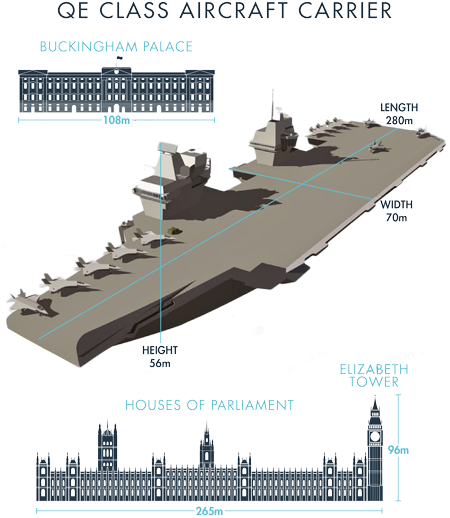Flagship Day For British Engineering

In a historic day for the Royal Navy and the Aircraft Carrier Alliance, HMS Queen Elizabeth, has set sail from her home port of Rosyth to start the first stage sea trials.
As a founding member of the Alliance, Thales has welcomed the milestone achievement that saw the 65,000 tonne carrier, the largest ship ever to serve with the Royal Navy, edge out to sea.
Three years after she was named by The Queen, the UK’s future flagship will spend an initial period of around six weeks at sea to test the fundamentals of the platform. The trials will evaluate the carrier’s speed, manoeuvrability, power and propulsion as well as undertaking weapons trials and additional tests on her levels of readiness.
Thales, as a founding member of the alliance (ACA), is working alongside Babcock, BAE Systems and the Ministry of Defence to deliver the 65,000 tonne carriers.
With more than 10,000 people employed in the construction of the ships, the project is the largest engineering programme in the UK and Thales’s highly skilled engineers have played an integral role.
As well as platform design, Thales leads the Power and Propulsion element of the QEC programme. Our skilled engineers work collaboratively with others from Rolls-Royce, GE Energy and L-3 to deliver a distribution network that will generate enough energy to power a town the size of Swindon, as well as each ship’s 33 tonne propellers.
Victor Chavez, Chief Executive, Thales UK, says,
What a fantastic moment for the Royal Navy and British engineering to see HMS Queen Elizabeth setting off on the first sea trials. We’re incredibly proud to be a founding member of the alliance and everyone who has played their part can rightly feel a sense of pride today.
Following this initial period, HMS Queen Elizabeth will return to Scotland for further testing and maintenance before heading back to sea for a second stage which aims to test her Mission Systems. She will transit to her home port of Portsmouth Naval Base to be handed over to the Navy later this year.
Admiral Sir Philip Jones, the Navy’s First Sea Lord, said: “This is a hugely significant moment for the Royal Navy, for all our Armed Forces and for our island nation.
“Already this ship represents the best of the UK’s industrial and engineering expertise, and once in service she will symbolise our military power and authority in the world for decades to come. There is still much work to do between now and then, but be in no doubt: a new era of British maritime power is about to begin.”
HMS Queen Elizabeth is the largest and most powerful warship ever constructed for the Royal Navy. The ship will operate with a crew of approximately 700, increasing to the full complement of 1,600 when aircraft are in operation. The Ship’s Company moved on board earlier this month. Working alongside industry colleagues, they have been familiarising themselves with the new ship and the high tech systems on board as well as undergoing training.
HMS Queen Elizabeth’s sister ship, HMS Prince of Wales is structurally complete and is currently in the outfitting phase of her programme.
The Class will be the centrepiece of Britain’s maritime capability. Each aircraft carrier, coupled with the F-35B Lightning aircraft, will form an integral part of the UK’s Carrier Strike capability. The vessels will transform the UK’s ability to project power around the world, whether independently or working closely with our allies, on operations ranging from high intensity warfighting to providing humanitarian aid and disaster relief.